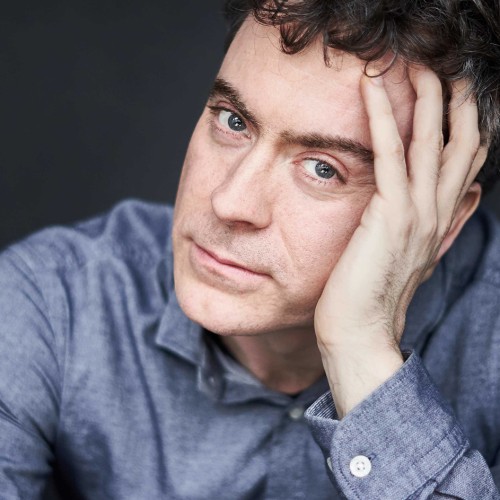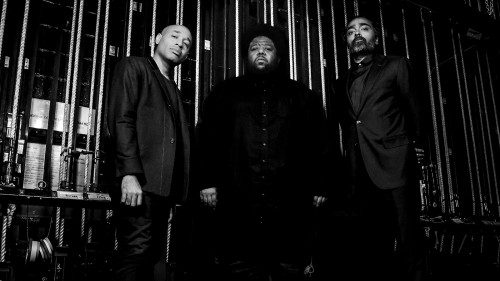
Paul Lewis, piano
Cookie Notice
This site uses cookies to measure our traffic and improve your experience. By clicking "OK" you consent to our use of cookies.
More than a decade ago, pianist Paul Lewis made his Boston and Celebrity Series debut with a sensational sold-out recital of Schubert’s last three piano sonatas.
In the intervening years, Lewis returned as a solo recitalist, recital partner, and orchestral soloist, always drawing praise for the deftness, shading, and intelligence of his interpretations. Celebrated as the “world’s most compelling interpreter of Schubert piano music” (The Arts Desk), Lewis returns this season, once again immersed in a worldwide recital tour of the composer’s final three sonatas. These introspective and profound works offer endless opportunities for reflection, and we invite you to experience—again or for the first time—these masterworks with the brilliant Paul Lewis.
All-Schubert Program:
A burst of creative energy exploded from Schubert during the last three months of his brief life. In addition to a few fine sacred choral works, he wrote some of the very greatest of all his instrumental masterpieces: the huge String Quintet, the fourteen songs published as his Swan Song (Schwanengesang, D.957), and three last piano sonatas. Schubert’s three magnificent and imposing late sonatas, completed in five weeks during September and October 1828, just weeks before his death, are testament to the fact that he was working at the absolute height of his creative energies. They are the product of a young composer whose tragically early death prevented him from having a “mature” or “late” period. In the few months of the last year of his life (only one year after Beethoven’s death), regardless of what he may have felt about the prospects of recovery from his illness, Schubert produced a large number of personal, leisurely, discursive, contemplative pieces widely varying in character and containing some of his most beautiful music.
These piano sonatas, which seem to speak directly from Schubert’s soul, form a compact picture of his complex musical personality: the three, which he intended to be a set, are quite different in character from each other. Together, however, they give voice to Schubert’s suffering, although they also are spacious in design and noble in concept. His friends immediately greeted the sonatas with enthusiasm, but they did not quickly gain wide acceptance because of Schubert’s innovations, in particular his now-celebrated untraditional harmonic procedures, unexpected developmental passages, and turbulent outbursts characteristic more of the piano fantasy than the sonata. The sheer length of the pieces was another issue for some auditors. Yet at least since the middle of the 20th century, these three sonatas have been understood to be monuments of the piano literature, expressing a unique emotional landscape.
Some have held that Schubert’s final trilogy of piano sonatas is not easily approachable. Although imbued with the composer's hallmark lyricism, the sonatas are also austere, unassertive, and even, in some ways, ambiguous: the seemingly stern and even embittered C-minor Sonata yields to the yearning of the A-major and finally to the warm regret of the final work.
Schubert died before these three sonatas could be published. Diabelli published them years later, in 1838, and although Schubert had intended to dedicate them to an important pianist and composer of the time, Johann Nepomuk Hummel (1778-1837), Diabelli dedicated them to Schumann, who praised highly some of Schubert’s music. Schumann was instrumental in bringing about the first performance of Schubert’s great C-major symphony in 1839 and then coined the unforgettable phrases about its “heavenly length,” but he did not, alas, understand the sonatas as well as he might have. He found them too loose and rambling and even once commented that they were written when the composer’s final illness had weakened his powers. Other musicians of the time who did not completely understand them either found fault with Schubert’s continuous, apparently infinite flow of musical ideas, which they saw as an unsatisfactory substitute for taking time to develop a few of them more fully. Schubert did, however, develop his themes, but in a manner different from Beethoven’s analytic treatment of the small motives into which he broke down his subjects. Schubert sought instead to develop his themes as large musical entities without disturbing the integrity of his long melodies, resulting in the spaciousness of the sonatas, which make infinitely greater demands on the performer’s musical intelligence and sensibility than they even make on their fingers. Further, it could also be said that these sonatas opened the door for the more dramatic musical language that was to come later in the century from such composers as Schumann and Liszt.
These three sonatas share many characteristics in regard to their form; Joseph Machlis has written decisively: Schubert “was not the master builder Beethoven was. Inevitably he loosened the form, introducing into its flexible architecture the elements of caprice and whimsy, improvisation and inspired lyricism. His sonatas are spacious, fantasy-like compositions that display all the characteristics of the Schubertian style—spontaneous melody, richly expressive harmonies, rhythmic vitality, charming changes of key, emotion-charged shifts from major to minor, figuration that is almost always fresh and personal (with an occasional tendency to ramble), and great freedom in the handling of classical form.”
A burst of creative energy exploded from Schubert during the last three months of his brief life. In addition to a few fine sacred choral works, he wrote some of the very greatest of all his instrumental masterpieces: the huge String Quintet, the fourteen songs published as his Swan Song (Schwanengesang, D.957), and three last piano sonatas. Schubert’s three magnificent and imposing late sonatas, completed in five weeks during September and October 1828, just weeks before his death, are testament to the fact that he was working at the absolute height of his creative energies. They are the product of a young composer whose tragically early death prevented him from having a “mature” or “late” period. In the few months of the last year of his life (only one year after Beethoven’s death), regardless of what he may have felt about the prospects of recovery from his illness, Schubert produced a large number of personal, leisurely, discursive, contemplative pieces widely varying in character and containing some of his most beautiful music.
These piano sonatas, which seem to speak directly from Schubert’s soul, form a compact picture of his complex musical personality: the three, which he intended to be a set, are quite different in character from each other. Together, however, they give voice to Schubert’s suffering, although they also are spacious in design and noble in concept. His friends immediately greeted the sonatas with enthusiasm, but they did not quickly gain wide acceptance because of Schubert’s innovations, in particular his now-celebrated untraditional harmonic procedures, unexpected developmental passages, and turbulent outbursts characteristic more of the piano fantasy than the sonata. The sheer length of the pieces was another issue for some auditors. Yet at least since the middle of the 20th century, these three sonatas have been understood to be monuments of the piano literature, expressing a unique emotional landscape.
Some have held that Schubert’s final trilogy of piano sonatas is not easily approachable. Although imbued with the composer's hallmark lyricism, the sonatas are also austere, unassertive, and even, in some ways, ambiguous: the seemingly stern and even embittered C-minor Sonata yields to the yearning of the A-major and finally to the warm regret of the final work.
Schubert died before these three sonatas could be published. Diabelli published them years later, in 1838, and although Schubert had intended to dedicate them to an important pianist and composer of the time, Johann Nepomuk Hummel (1778-1837), Diabelli dedicated them to Schumann, who praised highly some of Schubert’s music. Schumann was instrumental in bringing about the first performance of Schubert’s great C-major symphony in 1839 and then coined the unforgettable phrases about its “heavenly length,” but he did not, alas, understand the sonatas as well as he might have. He found them too loose and rambling and even once commented that they were written when the composer’s final illness had weakened his powers. Other musicians of the time who did not completely understand them either found fault with Schubert’s continuous, apparently infinite flow of musical ideas, which they saw as an unsatisfactory substitute for taking time to develop a few of them more fully. Schubert did, however, develop his themes, but in a manner different from Beethoven’s analytic treatment of the small motives into which he broke down his subjects. Schubert sought instead to develop his themes as large musical entities without disturbing the integrity of his long melodies, resulting in the spaciousness of the sonatas, which make infinitely greater demands on the performer’s musical intelligence and sensibility than they even make on their fingers. Further, it could also be said that these sonatas opened the door for the more dramatic musical language that was to come later in the century from such composers as Schumann and Liszt.
These three sonatas share many characteristics in regard to their form; Joseph Machlis has written decisively: Schubert “was not the master builder Beethoven was. Inevitably he loosened the form, introducing into its flexible architecture the elements of caprice and whimsy, improvisation and inspired lyricism. His sonatas are spacious, fantasy-like compositions that display all the characteristics of the Schubertian style—spontaneous melody, richly expressive harmonies, rhythmic vitality, charming changes of key, emotion-charged shifts from major to minor, figuration that is almost always fresh and personal (with an occasional tendency to ramble), and great freedom in the handling of classical form.”
The Piano Sonata in C minor is the first of the final trilogy, a long and powerful work that tells the listener a great deal about the music of the early 19th century. In the very first measures of the brusque and turbulent first theme, there are echoes of the sound of Beethoven’s “Pathétique” Sonata, as Schubert pours his powerful first subject into a mold supplied by his idol. Beethoven was Schubert’s most revered model. Schubert had been a pallbearer at Beethoven’s funeral only a year before composing this work, famously exclaiming, “Who can do anything after Beethoven?”
Nevertheless, the music of this sonata is distinctively that of Schubert. As the pianist Alfred Brendel has written: “He evokes the memory of Beethoven and the classical style, but is no docile follower. On the contrary, his familiarity with Beethoven’s works taught him to be different... Schubert relates to Beethoven, he reacts to him, but he follows him hardly at all. Similarities of motif, texture or formal pattern never obscure Schubert’s own voice. Models are concealed, transformed, surpassed.”
Some early critics thought Schubert’s abrupt changes of harmony to be clumsy failures of his technique, but we now hear them as unconventional expressions of his creative imagination. The opening theme of the first movement does not simply resolve, but ascends in a way that is unsettling with its uncertainty; yet, it sets in place the dramatic structure for the movement. The second subject contrasts with its calm, gracious, and charming melody, but in the development section, Schubert focuses on the initial theme and adds striking new material as he explores textures and keys.
The slow movement of this Sonata, Adagio, is a beautiful and personal song that stretches harmony between the familiar and the strange in a way that Chopin was later to do, making one wonder if Chopin could have seen a copy of the music when he visited Vienna as a young man in 1829. Highly unsettled episodes make the return to the calm theme cathartic.
The third movement, a short Menuetto, is a minuet, but it has the feeling of a powerful scherzo that would not be out of place in a symphony. The music ranges up and down the keyboard, changing register and color in a way that is almost orchestral. Uneven phrase lengths as well as expectant pauses are somewhat jarring. The trio section starts like a Ländler, a charming, rustic Austrian dance, but the harmonies soon become startling.
The three principal themes of the Allegro finale, one dancing, one dramatic, one lyrical, are loosely bound together into a kind of rondo-sonata movement by the rushing, almost frantic tarantella rhythm, yet they are given greater freedom to wander, harmonically, where they will on an exciting journey. A final episode of great fantasy, highlighted by its rhythmic ambiguities, leads to the last statement of the initial theme, which brings the Sonata to a brilliant close with final, emphatic chords.
© Susan Halpern, 2024
The Piano Sonata in C minor is the first of the final trilogy, a long and powerful work that tells the listener a great deal about the music of the early 19th century. In the very first measures of the brusque and turbulent first theme, there are echoes of the sound of Beethoven’s “Pathétique” Sonata, as Schubert pours his powerful first subject into a mold supplied by his idol. Beethoven was Schubert’s most revered model. Schubert had been a pallbearer at Beethoven’s funeral only a year before composing this work, famously exclaiming, “Who can do anything after Beethoven?”
Nevertheless, the music of this sonata is distinctively that of Schubert. As the pianist Alfred Brendel has written: “He evokes the memory of Beethoven and the classical style, but is no docile follower. On the contrary, his familiarity with Beethoven’s works taught him to be different... Schubert relates to Beethoven, he reacts to him, but he follows him hardly at all. Similarities of motif, texture or formal pattern never obscure Schubert’s own voice. Models are concealed, transformed, surpassed.”
Some early critics thought Schubert’s abrupt changes of harmony to be clumsy failures of his technique, but we now hear them as unconventional expressions of his creative imagination. The opening theme of the first movement does not simply resolve, but ascends in a way that is unsettling with its uncertainty; yet, it sets in place the dramatic structure for the movement. The second subject contrasts with its calm, gracious, and charming melody, but in the development section, Schubert focuses on the initial theme and adds striking new material as he explores textures and keys.
The slow movement of this Sonata, Adagio, is a beautiful and personal song that stretches harmony between the familiar and the strange in a way that Chopin was later to do, making one wonder if Chopin could have seen a copy of the music when he visited Vienna as a young man in 1829. Highly unsettled episodes make the return to the calm theme cathartic.
The third movement, a short Menuetto, is a minuet, but it has the feeling of a powerful scherzo that would not be out of place in a symphony. The music ranges up and down the keyboard, changing register and color in a way that is almost orchestral. Uneven phrase lengths as well as expectant pauses are somewhat jarring. The trio section starts like a Ländler, a charming, rustic Austrian dance, but the harmonies soon become startling.
The three principal themes of the Allegro finale, one dancing, one dramatic, one lyrical, are loosely bound together into a kind of rondo-sonata movement by the rushing, almost frantic tarantella rhythm, yet they are given greater freedom to wander, harmonically, where they will on an exciting journey. A final episode of great fantasy, highlighted by its rhythmic ambiguities, leads to the last statement of the initial theme, which brings the Sonata to a brilliant close with final, emphatic chords.
© Susan Halpern, 2024
This second of the three sonatas is a huge work, like the String Quintet and the great Symphony in C Major that Schubert had written in the spring of 1828. It is not as stormy as the sonata that preceded it, nor as transcendent as that which followed it, but it features both large gestures and intimate statements and could be said to be the warmest of the three.
The two principal subjects of the Allegro opening movement are set in sharp relief. The first consists of grand, majestic opening chords which break off at the subject’s conclusion into cascades of rippling triplets and unexpected modulations before the other theme, a serene, charming songlike melody, is introduced. The two subjects do not seem enough for Schubert, and in the development, he introduces completely new ideas.
Next comes a deeply expressive Andantino three-part movement, simple in structure but far-reaching in its emotional span. Affording a glimpse at Schubert’s inner life, this most affecting movement begins with a wistful, melancholy little melody, but then breaks out with almost orchestral turbulence and heartrending, harsh harmonic shifts, with clashing dissonances and chromatic scalar figures reflective of Schubert’s anguish. Tranquility does return in an ornamented version of the opening theme. The movement contains much drama that Schubert often emphasizes with extremes of dynamics.
The third movement is a Scherzo, Allegro vivace, capricious and witty but with moments of drama. The sonata closes in a leisurely fashion with a pretty melody, Rondo, Allegretto, a movement not in the high spirits that are so often expressed in this form, but one that rather is pervaded with a sense of congeniality, calmness, and serenity.
© Susan Halpern, 2024
This second of the three sonatas is a huge work, like the String Quintet and the great Symphony in C Major that Schubert had written in the spring of 1828. It is not as stormy as the sonata that preceded it, nor as transcendent as that which followed it, but it features both large gestures and intimate statements and could be said to be the warmest of the three.
The two principal subjects of the Allegro opening movement are set in sharp relief. The first consists of grand, majestic opening chords which break off at the subject’s conclusion into cascades of rippling triplets and unexpected modulations before the other theme, a serene, charming songlike melody, is introduced. The two subjects do not seem enough for Schubert, and in the development, he introduces completely new ideas.
Next comes a deeply expressive Andantino three-part movement, simple in structure but far-reaching in its emotional span. Affording a glimpse at Schubert’s inner life, this most affecting movement begins with a wistful, melancholy little melody, but then breaks out with almost orchestral turbulence and heartrending, harsh harmonic shifts, with clashing dissonances and chromatic scalar figures reflective of Schubert’s anguish. Tranquility does return in an ornamented version of the opening theme. The movement contains much drama that Schubert often emphasizes with extremes of dynamics.
The third movement is a Scherzo, Allegro vivace, capricious and witty but with moments of drama. The sonata closes in a leisurely fashion with a pretty melody, Rondo, Allegretto, a movement not in the high spirits that are so often expressed in this form, but one that rather is pervaded with a sense of congeniality, calmness, and serenity.
© Susan Halpern, 2024
The first movement of the B-Flat Sonata is not fast, but Molto moderato, deliberately paced, noble, elegiac, eloquent, and sometimes lyrical, as its huge sections assemble themselves into the order of the sonata form. The second, nominally the slow movement, has an Andante sostenuto tempo not a great deal slower than that of the first. The form is simple: three parts, as in a song, the lyrical first and last parts substantially the same, with a contrasting, dramatic middle section.
A relatively compact Scherzo follows, Allegro vivace con delicatezza, a quiet, fleet movement whose contrasting central trio section is marked by persistently syncopated rhythm. Last comes a long finale, Allegro ma non troppo, which combines the development and divergent tonal relationships of the sonata form with those of the rondo, where an established theme recurs in alternation with differing material. The result, here, is a long and almost endless flow of music.
© Susan Halpern, 2024
The first movement of the B-Flat Sonata is not fast, but Molto moderato, deliberately paced, noble, elegiac, eloquent, and sometimes lyrical, as its huge sections assemble themselves into the order of the sonata form. The second, nominally the slow movement, has an Andante sostenuto tempo not a great deal slower than that of the first. The form is simple: three parts, as in a song, the lyrical first and last parts substantially the same, with a contrasting, dramatic middle section.
A relatively compact Scherzo follows, Allegro vivace con delicatezza, a quiet, fleet movement whose contrasting central trio section is marked by persistently syncopated rhythm. Last comes a long finale, Allegro ma non troppo, which combines the development and divergent tonal relationships of the sonata form with those of the rondo, where an established theme recurs in alternation with differing material. The result, here, is a long and almost endless flow of music.
© Susan Halpern, 2024
Featured Artist
“Such is [Lewis’] commitment to Schubert that his sonatas could almost have been written with his temperament in mind. In his attention to detail, the light and shade and delicate pauses that characterize his playing, one might sense some divine inspiration coursing through his fingers. ”
Bachtrack
Videos
Jordan Hall Information
This performance is generously supported by
Stephen C. Perry & Oliver Radford.
This performance is an Aaron Richmond Recital, endowed by Nancy Richmond Winsten and the late Dr. Joseph Winsten.
Related Events

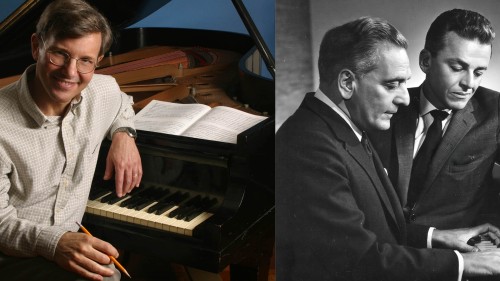
What Makes It Great? with Rob Kapilow
Songs from My Fair Lady, Camelot, and Brigadoon: Lerner & Loewe’s Greatest Hits
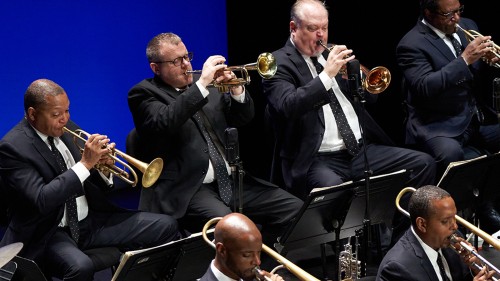
Jazz at Lincoln Center Orchestra with Wynton Marsalis (2026)
Duke in Africa
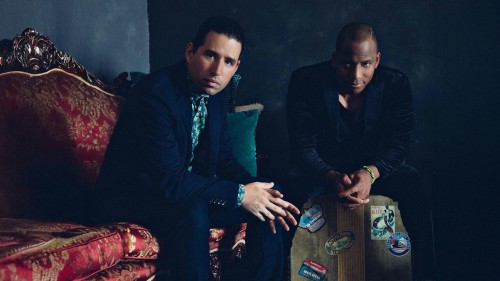
Alfredo Rodriguez & Pedrito Martinez
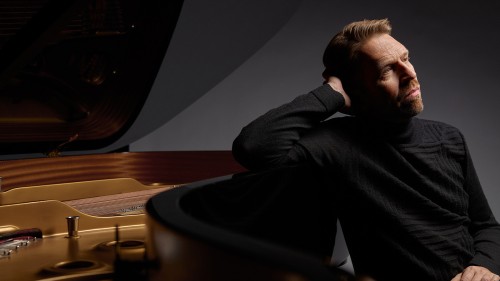
Leif Ove Andsnes, piano
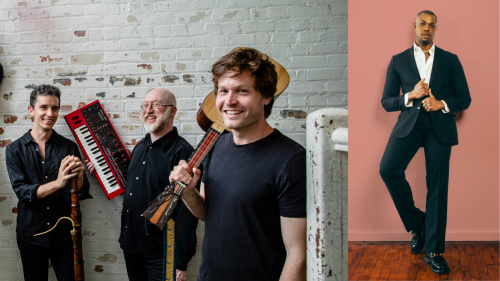
Ruckus and Davóne Tines
What is Your Hand in This?
Stay in touch with Celebrity Series of Boston and get the latest.
Email Updates Sign up for Email Updates